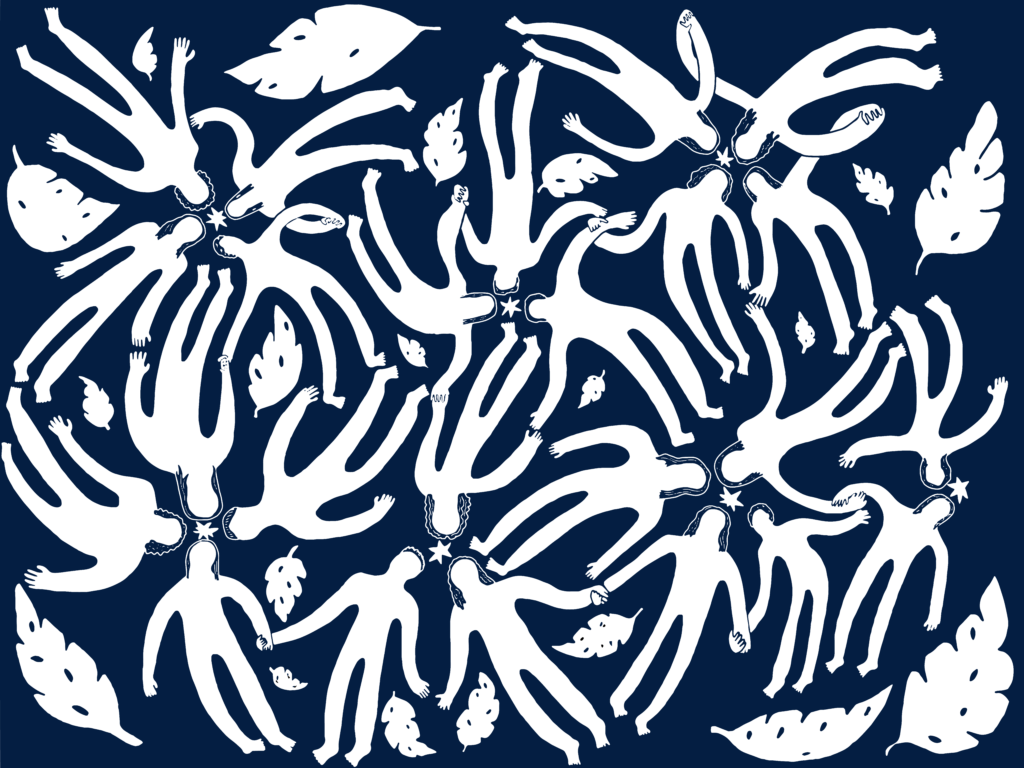Burned Out on a Burning Planet
Reflections from a disillusioned climate activist
Author: Sadie Morris, SFS ’22 & Common Home Editor

The Phenomenon of Burnout
Activists are the essential elements of political-social movements. It is the work of activists—over months, years, even decades—that is responsible for the radical transformation of society. Burnout is a threat to the long-term success of movements, in ways less visible, but, at times, even more detrimental than pushback or suppression. When activists burn out, they are no longer doing the work that is pushing society forward.
Burnout is the feeling of energy depletion or exhaustion that can lead an activist to stop engaging in activism. Sometimes the cause is working too many hours or taking on too many responsibilities. When a growing sense of disillusionment is to blame, burnout takes a more serious form. Often, a sense of ineffectiveness and lack of accomplishment confront activists. Fueled by the urgency and importance of their cause, activists believe change isn’t happening as quickly or on a large enough scale.
Though the phenomenon of burnout is getting more attention these days—especially after the World Health Organization offered an official definition in 2019—it has long been recorded anecdotally among activist circles.
I, myself, enter this discussion of disillusionment as a somewhat defunct climate activist. Not only have I felt the conditions of burnout myself, but I have watched peers cycle through the climate circles I have been a part of at rates that are unsustainable as a movement. Friends and acquaintances–many of whom are no longer involved in climate activism–have repeatedly expressed the same feelings of despair, hopelessness, and eventually apathy in the face of the climate crisis.
This prompted me to ask: what causes burnout in the climate movement? Is it different from other movements? How have other movements addressed the threat of burnout to their activists?
While burnout is consistently a problem for many movements, some conditions for burnout are particularly acute within climate action.
Activists have always confronted deeply entrenched structural problems. But climate activists are confronting a challenge that differs by scale: the assumptions that underpin the globalized capitalist system are inherently linked to the cause of the crisis.
“Other movements felt urgency in a different way. Other movements have not challenged the logic of growth,” explained Michael Kazin, a Georgetown University professor who specializes in the history of social movements. Essentially, capitalism is predicated on the idea of positive growth: the goal is for businesses to get bigger and the people wealthier through the continued exploitation of resources and labor. It fails to consider that natural resources are finite or that every product produced has an environmental footprint.
As awareness of this dynamic grows, it is taking a toll on mental health. The term eco-anxiety was even coined to name the “chronic anxiety and stress from feeling a sense of doom and gloom in face of the enormity of these global issues” faced by activists and nonactivists. It can be assumed that activists are particularly attuned to the gap between rhetoric and the radical reframing of the logic of growth that the climate crisis requires.
This constant awareness of both the scale of the crisis and the gap in action is a lot to carry, especially as climate change becomes more of a day-to-day experience. A 2018 study from the Yale Program on Climate Change Communication and the George Mason University Center for Climate Change Communication, found that “a majority of Americans are worried about harm from extreme events in their local area including extreme heat (61%), flooding (61%), droughts (58%), and/or water shortages (51%).” Real people and places, even in the wealthy United States, are feeling the climate crisis at home.
These stories can be powerful organizing tools and are often the very motivation activists call on to continue their work, but they are also heavy. I have often told people about the now-charred moonscapes of my California childhood. I have said I am fighting for the people I love and the places I call home– a phrase penned by the youth-led climate movement, Sunrise. Is it motivating? Yes. Do the months of ash-choked skies and scared calls from friends get to you? They do. It is little wonder that many activists feel a sense of ineffectiveness in the face of the scale and personal nature of climate change.
Avoiding Burnout
The climate movement is not the first to struggle in supporting activists, which is lucky in the sense that climate activists can learn from the activists who came before them. From my conversations with activists, former and current, I offer two principles as a guide for preventing burnout: 1) cultivate the mindset of a Lifer; 2) find community.
The mindset of a Lifer
Jeremy Liskar (age 22) is a self-proclaimed Lifer. That’s someone—in his own words—who is dedicated to working on climate justice the rest of their life. Liskar recognizes that “it is impossible to do this work without going through serious sh*t” but what is fundamental to his ability to hold all of the understanding that can lead to disillusionment and still keep working, is the capacity to hold two truths at once.
Holding two truths at once means accepting both one’s ability to affect change and one’s limitation. Put another way, the Jewish Talmud teaches, “Do not be daunted by the enormity of the world’s grief. You are not obligated to complete the work, but neither are you free to abandon it.” Echoing these words, Professor Mark Lance laments, “this is a lifetime project, one of the sad things to say is that there will still be injustice in the world when you die.”
One truth: climate change is destructive and unstoppable. Ecosystems and species have been lost that are not coming back. Some fallout from warming is unavoidable. People will continue to lose their livelihoods and lives in climate disasters.
A second truth: there is still a lot to save. The worst possible outcome is not fated. Organized people and social movements make a real difference.
This is a lifetime project, one of the sad things to say is that there will still be injustice in the world when you die.
Professor Mark Lance
How can we hold these two truths?
“Every 10th of a degree [of warming] impacts people on such a grand scale,” shared Liskar, the activist. He grounds himself in the miracle of life and beauty of human experiences–in doing whatever he can to preserve that for others even in our changing world.
It’s urgency on the one hand and patience on the other. “I think as urgent as it is, it’s just a fact,” says Professor Lance, “that unless a very large number of people work for quite a few years, you’re not going to make fundamental change.”
Annie Sanders, director of GreenCorps, a field school for environmental organizers, calls this playing the long game. Integral to playing the long game is storytelling. The stories of the people we love and the places we call home are powerful; so, it matters what stories activists tell. It’s not only about sharing the dread that motivates activists––the reasons they are fighting––“It’s about sharing the victories too. It’s about helping people understand how this work can be effective and is effective if you stick with it,” Sanders explains.
The climate movement has come a long way over the decades and especially in the last several years. It can be easy to forget the positive results amidst all the tragedy. There is power in recognizing what good has been done. Professor Kazin reminds us that, likely, all structural change felt impossible until it happened; but, more importantly, “small victories do matter: if you think it’s all or nothing, you get nothing.”

Finding community
Of course, activists as individuals do not make change; activism is inherently collective work. Social movements at their best are a community for activists: a place for holding the weight of the two truths communally, a place where joy and grief intermix as an anecdote for disillusionment.
When activists are grappling with the stakes and pressures of activism, there needs to be space within the movement community to identify these sources of stress, hold them, and reground activists in their belief for change. Liskar uses the term collective processing. It requires “deep vulnerable solidarity together” (in Liskar’s words)—for activists to bring their stories to the table, collectively acknowledge the grief of what has been lost and what will be lost, and to move forward together, with the knowledge that they are not in this alone.
Processing grief is only half the battle. Activists–and their organizations–must also take action. Community provides the opportunity for joy and fulfillment in the process of doing the work itself. Sanders from GreenCorps finds that “people who tend to not feel disillusioned as much are the people who have found a good role for them, a way of making an impact that plays to their strengths, and, frankly, stuff that they enjoy.” Historical and current movements have shown that there is room for any talent, be it art, music, creativity, that activists bring to the table.
Being able to grieve together goes hand-in-hand with being able to laugh together. People who do not feel supported by their community–to play a role that fits them well, to take a break when needed, to celebrate together–cannot enter the space of vulnerable solidarity needed to go through the hard stuff together too. Communities that can find joy together stave off the disillusionment which comes with the gravity of their work.
Notice that neither of these principles contains the word hope. Activists are often told to be “hopeful,” to be patient even because change does not happen overnight. Jasmine Ashby, a Graduate Justice Intern at the Georgetown Center for Social Justice, asks, “How do you continually ask someone to be patient while harm is still being done? It is exhausting to live in hope and not see it being realized.”
Instead of hope, the two truths of the Lifer and the support of the community can foster “Active Hope.” Active Hope is an idea developed by Johanna Macy, an anti-nuclear and ecological, Buddhist activist. In her words, “Active Hope is a practice. Like tai chi or gardening, it is something we do rather than have. It is a process we can apply to any situation, and it involves three key steps. First, we take a clear view of reality; second, we identify what we hope for in terms of the direction we’d like things to move in or the values we’d like to see expressed; and third, we take steps to move ourselves or our situation in that direction.”
In a supportive community, activists can practice Active Hope when they see the two truths of their situation and still organize for the outcome they want to be realized.
The Lifer within their Community
The worst possible outcome for a movement is for it to lose an activist. Activists are the building blocks of change, the source of continuity amidst political cycles, and the reason other activists in their community keep going. Ideally, every activist is a Lifer.
The activist’s work is to cultivate the mindset of a Lifer–to balance the weight of the two truths, to recognize that the work will never be done but that they are not allowed to sit it out. The work of the activist community is to support the activist through the process and through the inevitable ebbs and flows of human life; to be a place of support, connection, rest, and joy for the movement.
